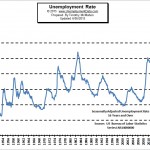
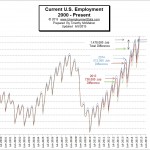
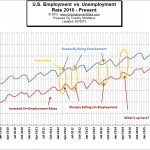
Employment Levels During Recessions
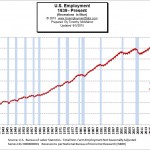
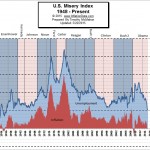
Comparing U3 to U6
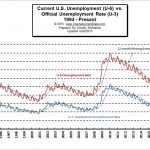
You may also notice that when unemployment rises the gap between U-3 and U-6 generally increases. For instance, in October 2000, unemployment was at the lowest levels on this chart with U-3 at 3.6% and U-6 was at 6.3%. For a difference of only 2.7%. But at the peak of unemployment in January 2010 U-3 was at 10.6% but U-6 shot all the way up to 18% for a difference of 7.4%. More…
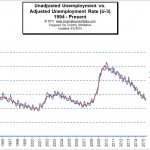
So in theory removing these fluctuations makes the data easier to compare from month to month and in practice it looks somewhat like a moving average smoothing out the peaks and valleys. So let’s look at how seasonally adjusted data compares to unadjusted unemployment data on a chart.
Comparing Bureau of Labor Statistics numbers to an Independent Source

In this chart we can see that the Gallup numbers are occasionally higher than the BLS numbers but they are occasionally lower as well, so it is difficult to tell if the data is significantly different. At first glance they appear to track pretty well until July of 2013 when they start diverging drastically. See: BLS vs. Gallup Unemployment Rates.
See Also:
- Monthly Historical Unemployment Rates from 1948 through the present.
